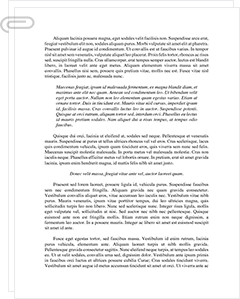 Study Document
Study Document
Luis Bunuel and Orson Welles: Influential and Term Paper
Pages:4 (1232 words)
Sources:1+
Subject:Arts
Topic:Visual Arts
Document Type:Term Paper
Document:#99007864
Luis Bunuel and Orson Welles: Influential and Revolutionary Filmmakers in Film History
In the history of film, two important directors are recognized all over the world because of their great contribution to the development of film throughout the years. These two directors are Luis Bunuel, director of the Surrealist film "Un Chien Andalou" (An Andalusian Dog) and Orson Welles, director of the American classic film, "Citizen Kane." Both directors have given significant contributions to the history of film that are currently and still in practice. There are numerous filmmakers who are equally qualified to be considered as influential filmmakers, but Bunuel and Welles' contribution surpasses the other directors' contributions and revolutionary practices that changed and shaped the world and history of film at present.
Luis Bunuel is a Spanish director who was known primarily for his contribution the Surrealist movement that emerged along with the French Impressionist movement during the latter part of 1920s. "Un Chien Andalou" (An Andalusian Dog), which was produced in the year 1928, marked the beginning of the use of surrealism in films. During this time period, surrealism is fast becoming a popular movement, and is prevalent in the visual arts, such as the paintings of Andre Breton and Salvador Dali. Incidentally, Dali is influential in Bunuel's works because his works include those of Dali's paintings, one of which was shown in "Un Chien Andalou." The Surrealist movement is characterized to be the anti-thesis of the normative formula of most films. Instead of adapting a narrative form and style, Surrealist films are antinarrative, and appeals mainly to the subconscious thoughts of people. Surrealist works are also devoid of logic, as can be seen in Bunuel's portrayal of a woman sucking the toes of a statue, and the popular scene wherein Bunuel himself cut with a razor the eyeballs of a woman. These scenes are evidently devoid of any logic, and in fact, surrealist films do not aim to explain at all whatever message (if there is a message) a film has. Surrealism is defined as the "belief in the superior reality of certain forms of associations, heretofore neglected, in the omnipotence of dreams, in the undirected play of thought" (Bordwell and Thompson 1997 455). It is said that surrealism subsists to the Freudian psychology, wherein the subconscious part of a person's mind plays a big part in determining and understanding/comprehending the individual's actions and behavior. Freudian thought is at its popularity during Bunuel's time, and the Surrealist movement is one of the early adaptors of the said belief. What makes Bunuel stand out and remarkable among his contemporaries in the Surrealist movement is that he was able to affect his audience through his clever portrayal of the Freudian thought through the illogical, spontaneous scenes in Bunuel's films. Luis Bunuel have, indeed, contributed a significant practice in film history, and it is by breaking the barriers that divides exploration of thought and creativeness and experimentation and the norms of film production that are prevalently used during Bunuel's time until the Surrealist movement became popular and accepted as a new form of artistic expression (Stone 1997 569-77).
Meanwhile, Orson Welles' significant contribution to the world of filmmaking is the introduction of a new narrative form, which was utilized in the classical film, "Citizen Kane." The film subsists to the formula of most films during that time (1941), but Welles provided his viewers a whole new way of looking at the main character's life in the film by using the plot of the story manipulate the story time, or the interplay of time used in the film. "Citizen Kane" uses a detective-type narrative style, wherein Thompson, the character investigating Kane's life, goes through a non-linear,…
Sample Source(s) Used
References
Bordwell, David and Kristin Thompson. "Film Art: An Introduction." New York: McGraw-Hill Book Co. 1997. p. 455.
Sarris, Andrew (Ed.). "Interview with Film Directors." New York: Bobbs-Merrill Company, Inc. 1995. pp. 457-78.
Stone, Judy. "Conversations with International Filmmakers." California: Silman-James Press. 1997. pp. 569-77.

